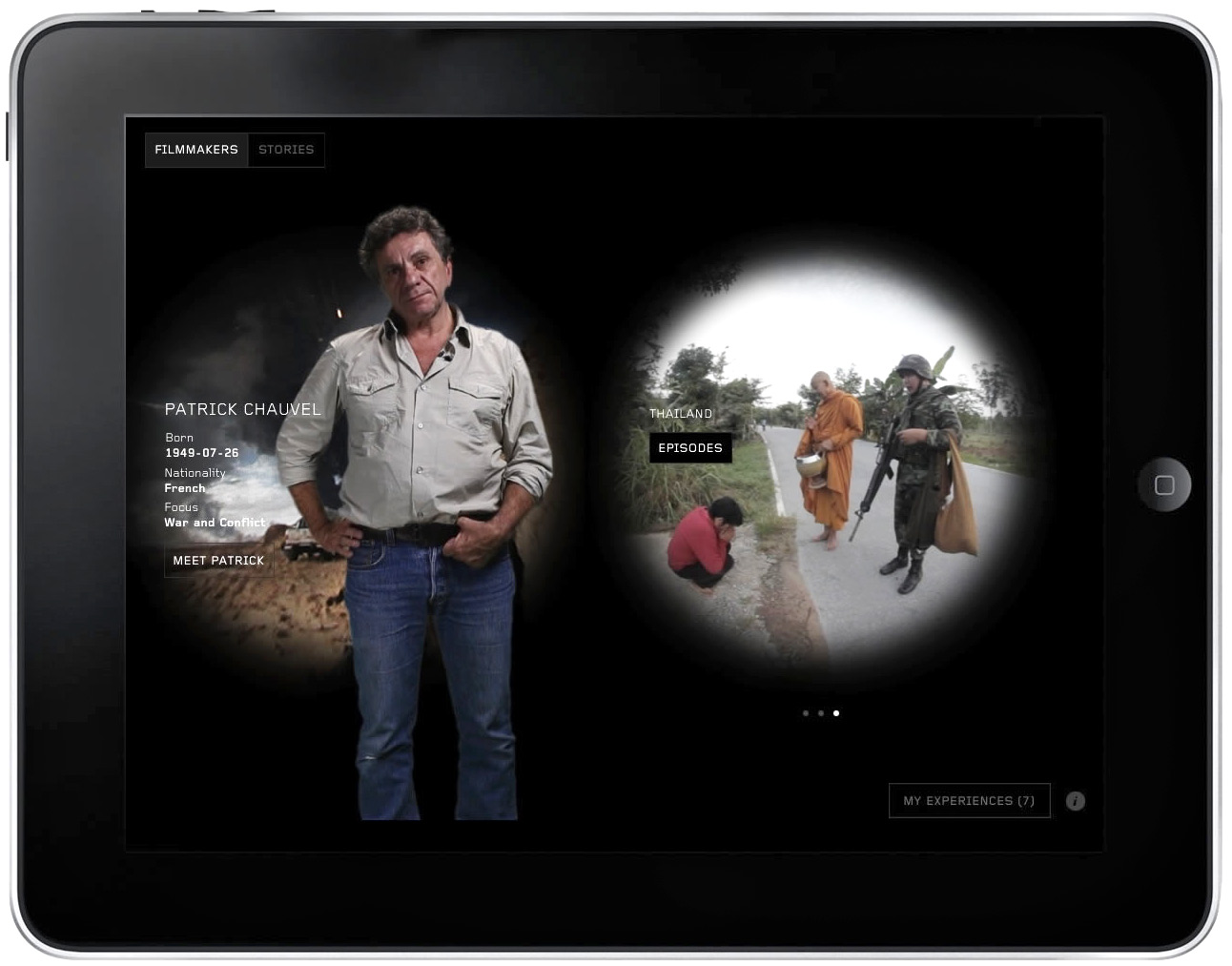
UPDATE, November 11, 2011: Condition ONE is now available for download in the iTunes app store. Early last month I had the opportunity to test drive the app, which includes three short videos by veteran conflict photographer Patrick Chauvel. The user experience is unique – more akin to a video game than a television news story. But despite the lack of a strong narrative, you feel fully submerged in each video, guided by Chavel’s voice-over. I preferred swiping my finger to move around the scene as opposed to manipulating the iPad itself (using the app in public isn’t very subtle – crowds gather quickly behind you). The free app is available only for the iPad but Condition ONE founder and CEO Danfung Dennis said the company is developing a version for the Android and other platforms. – PW
Danfung Dennis has been documenting war for years, first with still photographs, then in motion, culminating with the award-winning documentary Hell and Back Again. Still, he found himself unsatisfied, feeling that coverage of war was becoming “mundane, almost ordinary,” he says. “Society was numb to the images of conflict.”
An idea was born: Condition ONE, an app to provide a new form of storytelling. Dennis says it combines “the power of the still image, the narrative of films and the emotional engagement of tactile experiences to create a new language that is so immersive, it will shake viewers out of their numbness to traditional media and provide them a powerful emotional experience. Instead of opening a window to glimpse another world, we are attempting to bring the viewer into that world as an active participant.”
Condition ONE, under development for the Apple iPad and other tablets, uses a custom camera system developed by Dennis that “fuses the ethics, method and aesthetics of photojournalism with the tradition of cinematic filmmaking with virtual reality,” he says. “The entire human field of view is captured on these camera systems, and the stories are edited specifically for the tablet application to create a truly immersive experience.”
He continues, “Once viewers enter a video experience, they can move the tablet in any direction and see the corresponding field of view. The traditional two-dimensional, rectangular frame is shattered as viewers step inside the frame and experience the stories as the protagonists.”
One photographer is already working with the specialized camera system: longtime conflict photographer Patrick Chauvel. Currently in Libya, Chauvel writes that when Dennis described the idea for Condition ONE, he was immediately tempted to try it. “Before, when I was shooting, my camera only showed what was in front of me, the action. It was frustrating because often what happens just at your right is part of the story. Now it is like having five cameras. One more at your right, your left, up and down,” Chauvel writes. “It’s not easy to use; you have to watch not to get your shoes in the frame or your shadow or your face … But the result is worth it. You bring your story with more images all around and more information, so you are a better witness. Now people can feel the story.”
More Must-Reads from TIME
- Donald Trump Is TIME's 2024 Person of the Year
- Why We Chose Trump as Person of the Year
- Is Intermittent Fasting Good or Bad for You?
- The 100 Must-Read Books of 2024
- The 20 Best Christmas TV Episodes
- Column: If Optimism Feels Ridiculous Now, Try Hope
- The Future of Climate Action Is Trade Policy
- Merle Bombardieri Is Helping People Make the Baby Decision
Contact us at letters@time.com